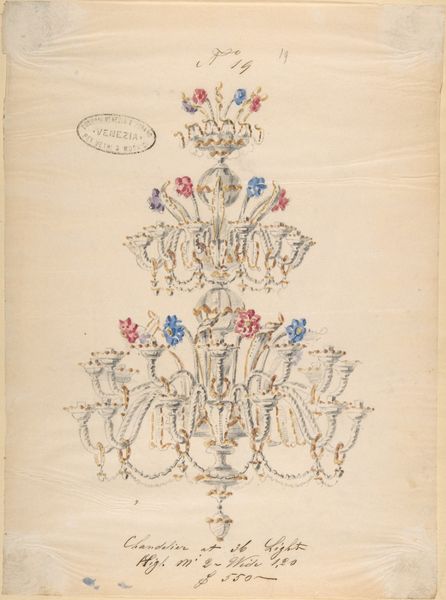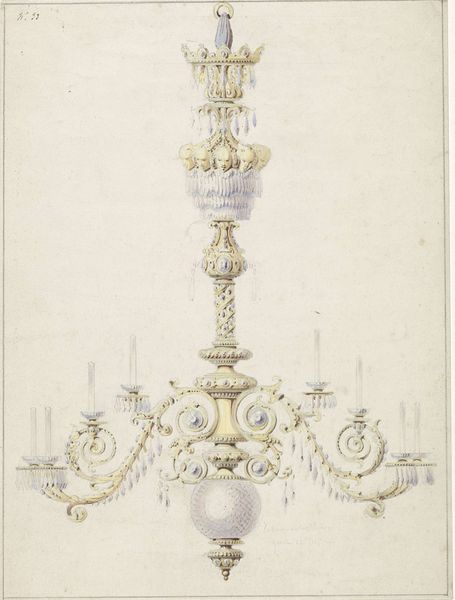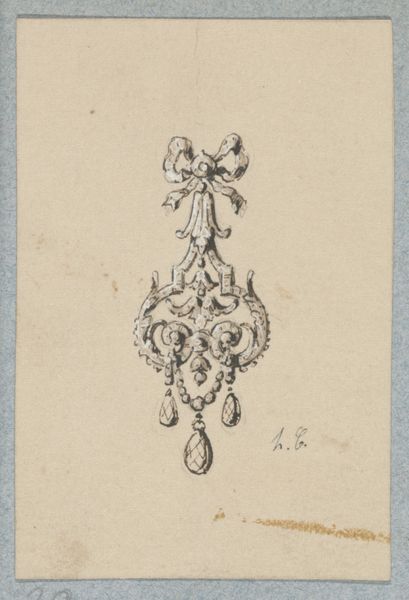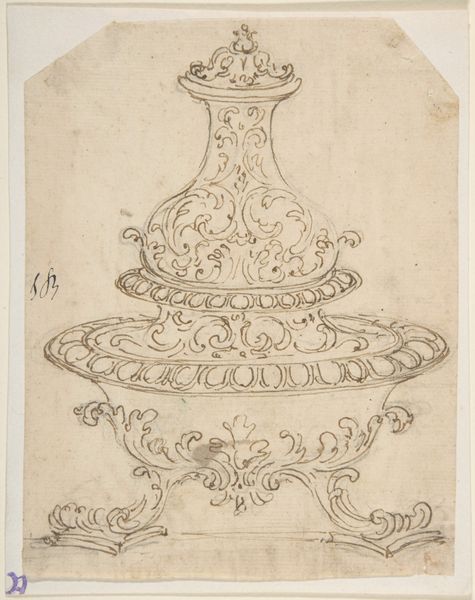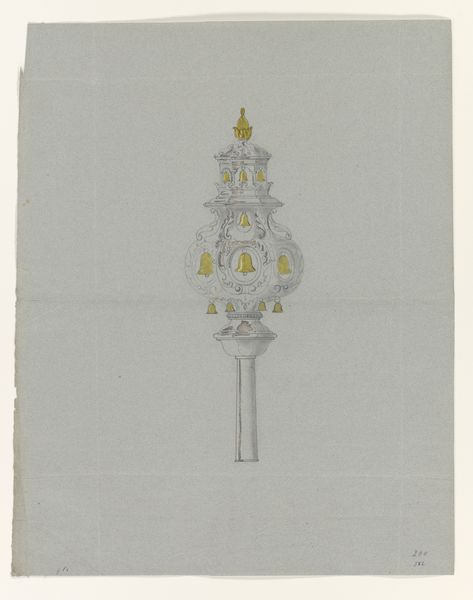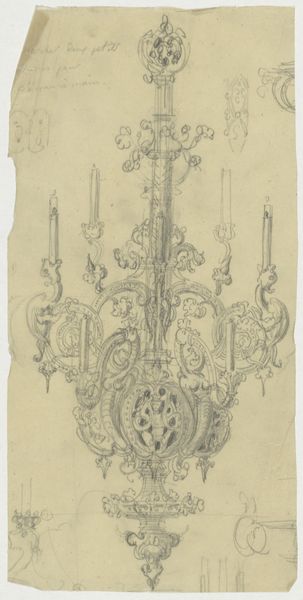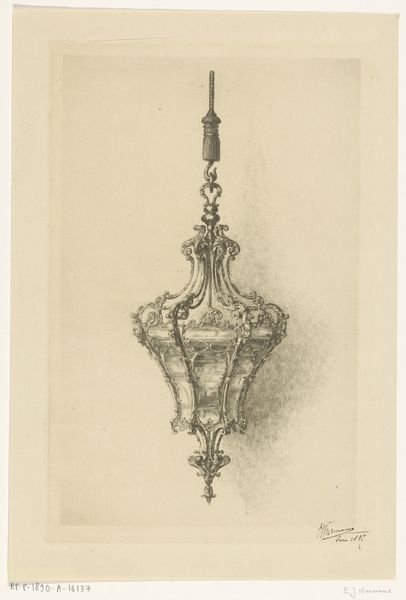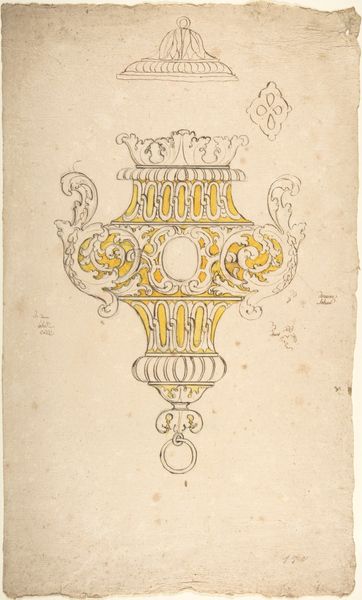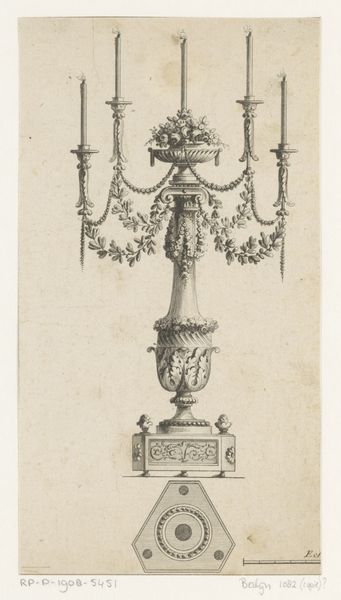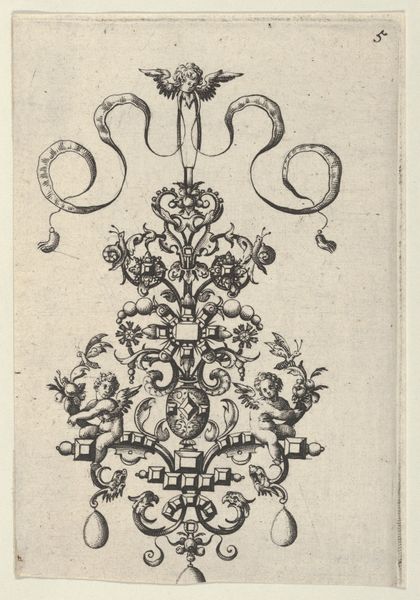
drawing, watercolor, ink
#
drawing
#
baroque
#
watercolor
#
ink
#
geometric
#
decorative-art
Dimensions: sheet: 8 3/4 x 5 1/2 in. (22.2 x 14 cm)
Copyright: Public Domain
Curator: At the Metropolitan Museum of Art, we have a drawing called "Design for a chandelier," likely created between 1745 and 1755. It’s rendered in ink and watercolor. What strikes you initially about this piece? Editor: An immediate sense of opulence. The level of ornate detail is astonishing, verging almost on theatrical excess. It speaks volumes about the era's aesthetic sensibilities. Curator: Absolutely. Chandeliers in this era weren't just for illumination. They symbolized power and status, adorning spaces inhabited by the aristocracy and elite. Notice the strategically placed floral ornaments and what appear to be musical horns. They reflect a celebration of refinement. Editor: Yes, those details act as visual cues. Horns are often associated with festivities and triumphs. Coupled with the flora, we are presented with motifs that point to themes of bounty and cultivated pleasures. It is worth mentioning the use of tassels throughout the image. These function both as representations of actual chandeliers and as purely decorative symbols with significance relating to prestige, which are not without their place within a socio-economic understanding of Baroque style and culture. Curator: Precisely! And examining the image within its historical framework is very important, because, from my perspective, an art object such as a sketch for a chandelier is inseparable from issues of display, wealth and taste. One needs only to look at how architectural styles, influenced by powerful figures and institutions, affected the role of artwork production. This drawing might have been a means to convey the vision of a wealthy client for example. Editor: I agree, although to me it feels like there is more going on than a commission request or fulfillment. But looking at the cultural significance and memory attached to certain motifs across time—the horn, for instance— reveals the historical continuities of human expression, while reminding us that objects such as these can often hold a deeper symbolic charge. Curator: It also allows a rare glimpse into the cultural milieu. Without the cultural backdrop it can simply remain an aesthetically pleasing decorative drawing. Editor: Seeing through that lens changes everything, it becomes so much richer!
Comments
No comments
Be the first to comment and join the conversation on the ultimate creative platform.
